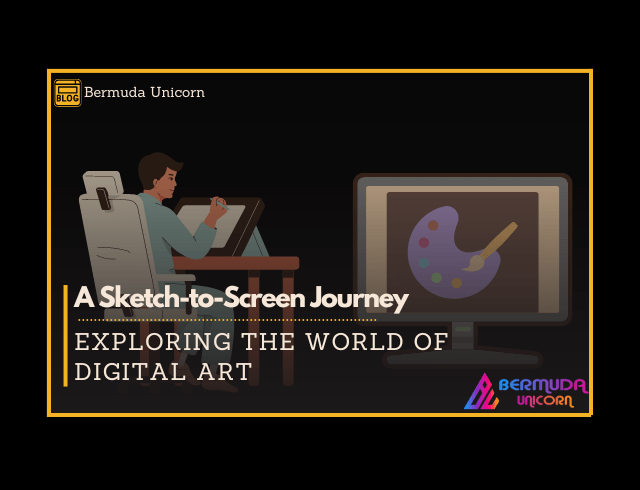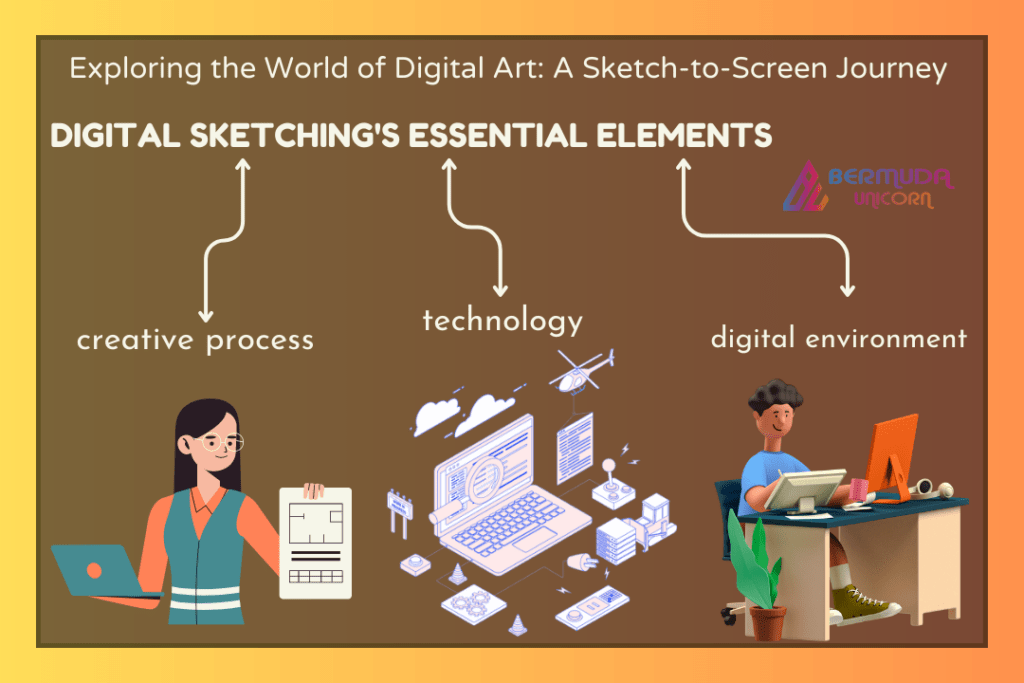![]()

Introduction
The introduction of digital technology has caused a notable upheaval in the art world. The vast array of instruments and platforms that are accessible to artists today have opened up fresh avenues for artistic expression. The path from sketch to screen and the seemingly endless possibilities that it provides are examined in this blog post as we start away on a fantastic journey into the universe of digital art.
1. Adopting a digital Renaissance Mindset
A fascinating and cutting-edge form of artistic expression is now digital art. Artists are able to push the limits of their creativity thanks to potent computers, graphic tablets, and specialized software.

2. Digital Sketching’s Essential Elements
Sketches are the first step in the creative process for both digital and traditional artists. To draw directly on a computer screen, however, they use graphic tablets, stylus pens, or touchscreens in the digital world. With the help of this technique, they may more precisely and effectively realise their ideas in a digital environment.
Artists have the ability to play around with a variety of brushes, textures, and colours while using digital sketching. Before continuing, their artwork may be readily edited and modified to ensure that it is ideal.
3. Converting Concepts to a Digital Canvas
Digital artists move their artwork from the first drawing to specialized programs like Adobe Photoshop, Corel Painter, or Procreate after it is finished. With the help of these robust programs, artists may work with virtual paints, pencils, brushes, and other art supplies. They also provide a wide range of tools and features that mimic conventional art materials.
To get the desired effects, artists can add layers, modify opacity, and experiment with various blending modes at this stage. Artists are able to produce detailed details and intriguing compositions because of this flexibility and control.

4. Making Use of Digital Painting Methods
A new realm of discovery and experimentation is made possible by digital painting. Artists may explore distinctive digital effects like textures, gradients, and lighting while imitating traditional media. Artists may experiment with various methods, colour schemes, and aesthetics without affecting the original work because to the flexibility to make non-destructive modifications. This independence fosters artistic development and pushes limitations.
5. Displaying the Digital Works of Art
Artists may display and distribute their works in a variety of venues after the digital artwork is finished. Artists have the chance to connect with a Universal audience through digital channels including social media, online shelves, and digital stages. Digital art can be shared, reproduced, and seen on a variety of devices with ease, making it widely accessible and admired.
Conclusion
The world of art has undergone a change thanks to digital art, which gives creators an exciting and unrestricted space to express their ideas. The digital media offers artists an unmatched toolbox, versatility, and options for experimentation, from first sketches to the finished piece of art. It fills the gap between conventional and digital creative forms, motivating artists to push the envelope and set off on an enthralling innovation adventure. Digital art allows you to explore a world of limitless possibilities and uncover the magic it possesses, whether you’re a creative individual exploring new directions or an art aficionado mesmerised by the union of technology and creativity.
